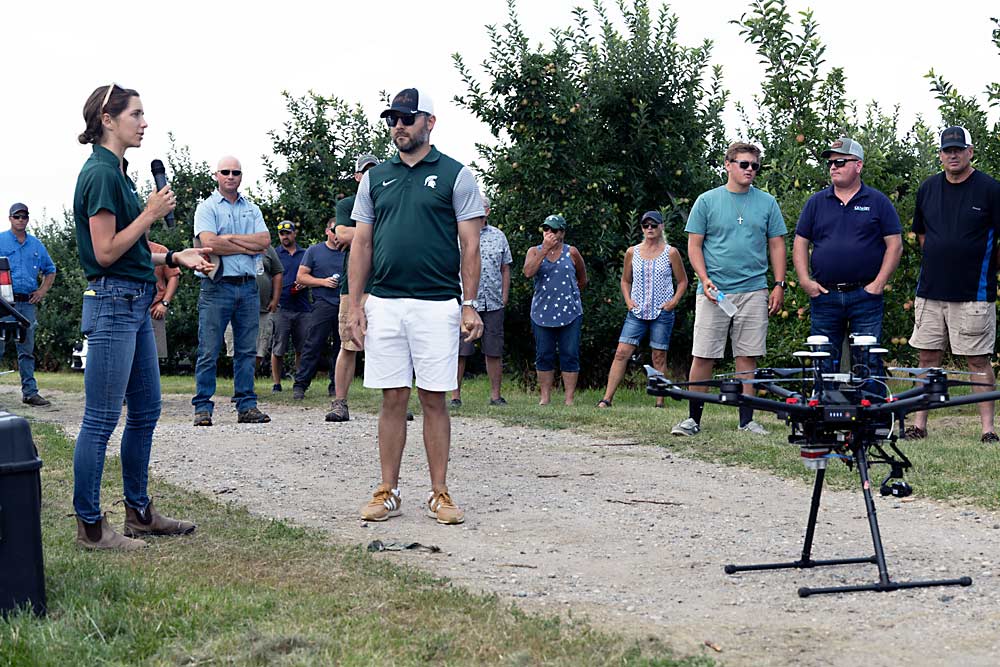
Michigan Pomesters held its 10th annual RidgeFest, a tour of orchards on western Michigan’s Fruit Ridge, on July 29.
One of the tour stops covered the growing field of computer vision in orchards. Several speakers gave examples of the new technologies being developed.
Michigan State University apple production specialist Anna Wallis said apple growers already are collecting data through existing technology such as MSU’s Enviroweather program. And new ways to collect and digitize data down to the fruitlet level are being developed as we speak. The question is how to combine all of those data streams to give growers meaningful information about their blocks, from bloom to packing house, in an accessible way.
The RidgeFest speakers are working on that, each in their own way. The first speaker was Richard Price, a research assistant in the laboratory of MSU professor Bruno Basso, which does work in remote sensing and geographic information systems. Price displayed some of the drones the lab uses to capture aerial imagery of farms, including apple orchards.
Remote sensors on the drones can capture detailed orchard data that can’t be observed by the human eye. The lab can use that data to reconstruct the orchard on a computer, and use that model to help growers identify problems they might otherwise miss, Price said.
Patrick Plonski, CEO of Farm Vision, a Minnesota company, showed how precision agriculture for tree fruit production can be carried out with a simple handheld device. He stuck a smartphone with a Farm Vision app onto a handle with a GPS unit attached. He walked down a row, moving the handle up and down the tree to collect data that can be used to aid tasks like thinning and yield estimation. The handheld device also can be mounted to a vehicle, put on a gimbal, or even attached to a drone.
Jenny Lemieux, CEO of Vivid Machines, a Canadian company, displayed the company’s xVision camera mounted to an ATV, which gathers digital data for precision crop load management. Users can filter the data by variety, block, date and other factors to help them understand how their orchards change over time. Lemieux said the company is looking for grower partners right now, to better learn what growers want from this kind of technology.
A representative from Automated Fruit Scouting discussed orchard data collection — including fruit sizing, and bud and bloom count — via smartphone. He said all that’s needed is a smartphone and FruitScout account. He showed how the handheld technology can scout 200 trees in 10 minutes.
—by Matt Milkovich






Leave A Comment